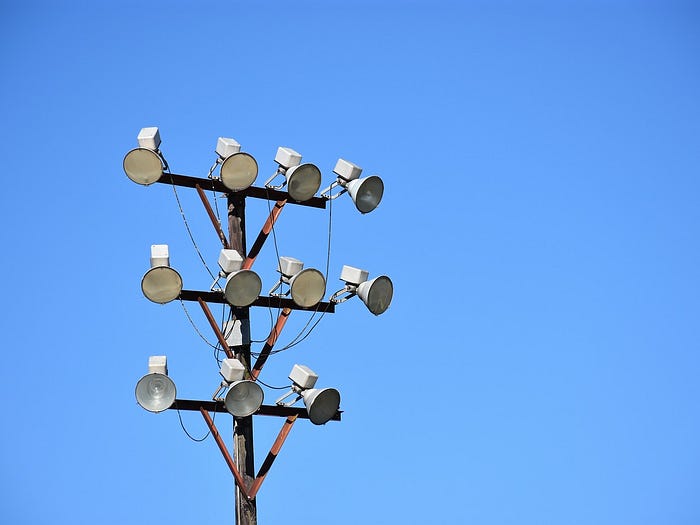Get Samples
If you are looking for industry and outdoor Lighting solutions,
look no further than Seeking LED-Lighting.
Apr 7, 2024

Stadium lighting is crucial in creating an electrifying atmosphere during sporting events. It enhances the overall visibility, allowing spectators to immerse themselves in the action fully. Over the years, stadium lighting technology has evolved significantly, with high-power LED lights emerging as a popular choice. This article will delve into the advantages of high-power LED stadium lights over traditional halogen fixtures, exploring their energy efficiency, brightness, longevity, and environmental impact. By shedding light on these factors, we aim to provide a comprehensive analysis to help stadium owners make informed decisions when choosing lighting solutions.
Evolution of stadium lighting technology
The history of stadium lighting dates back to the early 20th century when the first floodlights were introduced to illuminate sports arenas. Initially, halogen fixtures were the go-to choice due to their affordability and availability. However, as technology advanced, high-power LED lights revolutionized the industry. LED stadium lights offer numerous advantages, making them a preferred option over traditional halogen fixtures.
Advantages of high-power LED stadium lights
Energy efficiency and cost savings with LED stadium lights
One of the key advantages of high-power LED stadium lights is their superior energy efficiency. LED lights consume significantly less electricity compared to halogen fixtures, resulting in substantial cost savings. The advanced design of LED lights allows them to convert a higher percentage of electrical energy into visible light, minimizing wasted energy in the form of heat. This enhanced efficiency not only reduces the environmental impact but also translates into lower utility bills for stadium owners.
Brightness and visibility comparison between LED and halogen stadium lights
LED stadium lights outshine their halogen counterparts when it comes to brightness and visibility. The focused beam of LED lights ensures uniform illumination across the playing field, eliminating dark spots and shadows. This even distribution of light enhances visibility for both players and spectators, creating a more immersive and enjoyable experience. Additionally, LED lights provide better color rendering, allowing fans to perceive the true colors of team jerseys and other visual elements.
Longevity and durability of LED stadium lights
LED stadium lights boast an impressive lifespan, far surpassing that of halogen fixtures. On average, LED lights can last up to 100,000 hours, whereas halogen lights may only endure around 3,000 hours. This extended lifespan not only reduces the frequency of bulb replacements but also minimizes maintenance costs associated with changing fixtures at high heights. Furthermore, LED lights are built to withstand harsh outdoor conditions, ensuring durability even in extreme weather conditions.
Environmental impact of LED stadium lights
In an era where sustainability and environmental consciousness are paramount, LED stadium lights offer a greener lighting solution. Unlike halogen fixtures, LED lights do not contain hazardous substances such as mercury, making them safer to handle and dispose of. Additionally, LED lights emit significantly less carbon dioxide and other greenhouse gases, contributing to a reduced carbon footprint. By adopting LED stadium lights, stadiums can demonstrate their commitment to environmental responsibility while still delivering exceptional lighting quality.
Considerations when choosing stadium lighting solutions
When selecting stadium lighting solutions, several factors must be considered. Firstly, it is essential to evaluate the specific lighting requirements of the stadium, taking into account factors such as field size, seating capacity, and desired lighting levels. Secondly, the initial cost and long-term return on investment should be analyzed. Although LED lights may have a higher upfront cost, their energy efficiency and longevity result in substantial savings over time. Lastly, it is crucial to choose a reputable supplier who can provide quality products and reliable after-sales support.
Case studies of stadiums that have switched to LED lighting
Numerous stadiums around the world have already made the switch to LED lighting, reaping the benefits of this advanced technology. For example, the Wembley Stadium in London, England, underwent a lighting upgrade in 2010, replacing its halogen fixtures with high-power LED lights. This transition resulted in significant energy savings and improved lighting quality. Similarly, the Maracanã Stadium in Rio de Janeiro, Brazil, installed LED stadium lights in preparation for the 2014 FIFA World Cup, enhancing visibility for players and spectators alike. These case studies serve as compelling evidence of the positive impact LED lighting can have on the stadium experience.
Installation and maintenance of LED stadium lights
The installation and maintenance of LED stadium lights require careful planning and expertise. It is recommended to engage professional lighting contractors who specialize in sports lighting to ensure a seamless transition. The installation process involves assessing the existing infrastructure, selecting the appropriate LED fixtures, and designing an optimal lighting layout. Regular maintenance is essential to ensure optimal performance and longevity of the LED lights. This includes periodic cleaning, inspection, and replacing any faulty components. By following proper installation and maintenance practices, stadiums can maximize the benefits of LED lighting and avoid potential issues down the line.
Conclusion: The future of stadium lighting with LED technology
As we shine a light on efficiency in stadium lighting, it becomes clear that high-power LED lights are the way forward. The advantages they offer in terms of energy efficiency, brightness, longevity, and environmental impact make them a superior choice compared to traditional halogen fixtures. Stadium owners looking to enhance the spectator experience, reduce energy consumption, and demonstrate environmental responsibility should consider making the switch to LED stadium lights. With continuous advancements in LED technology, the future of stadium lighting looks brighter than ever before
CTA: To learn more about how LED stadium lights can revolutionize your sporting venue, contact our team of experts today. Let us help you illuminate the way to a more efficient and sustainable future for your stadium.